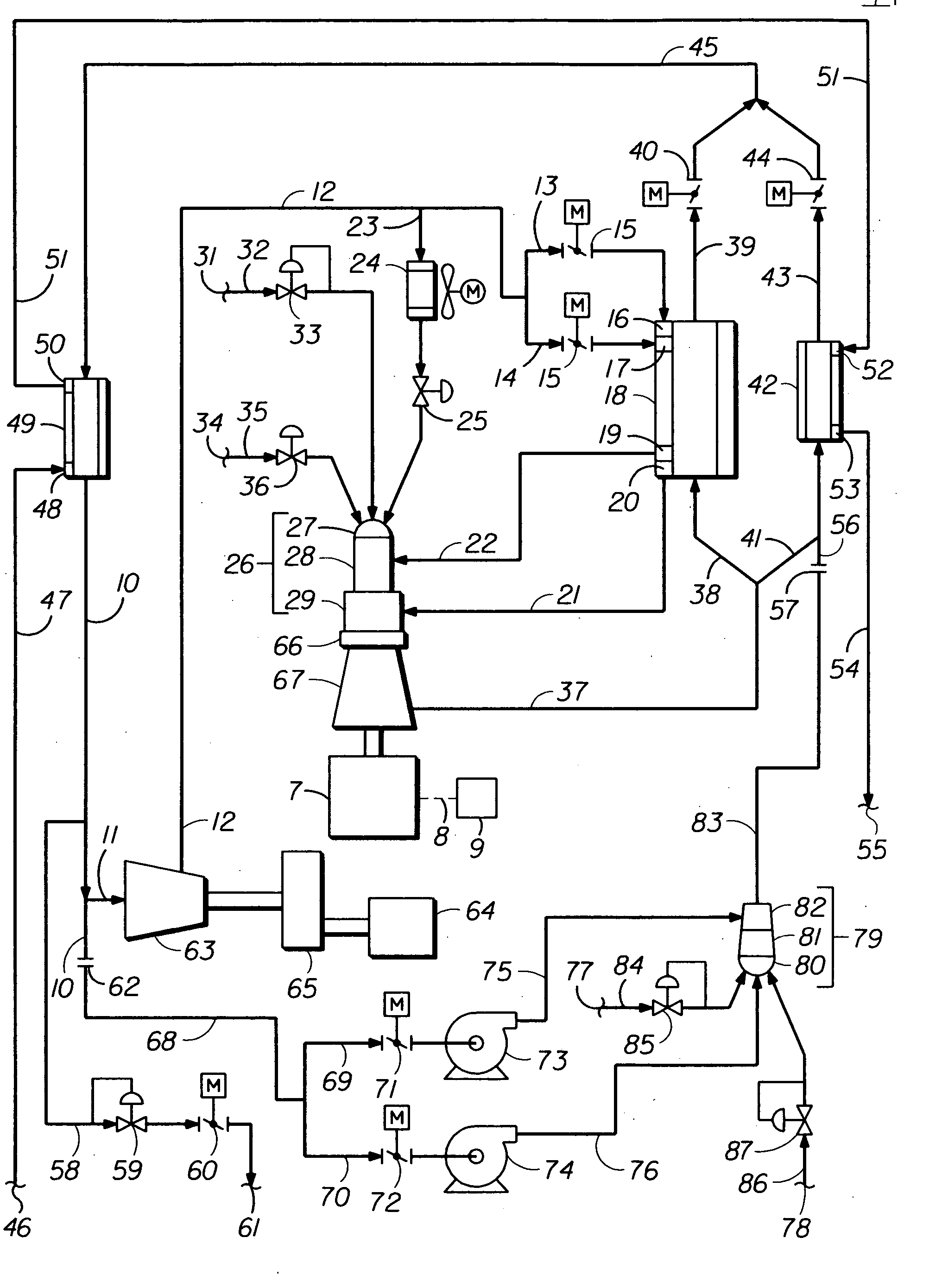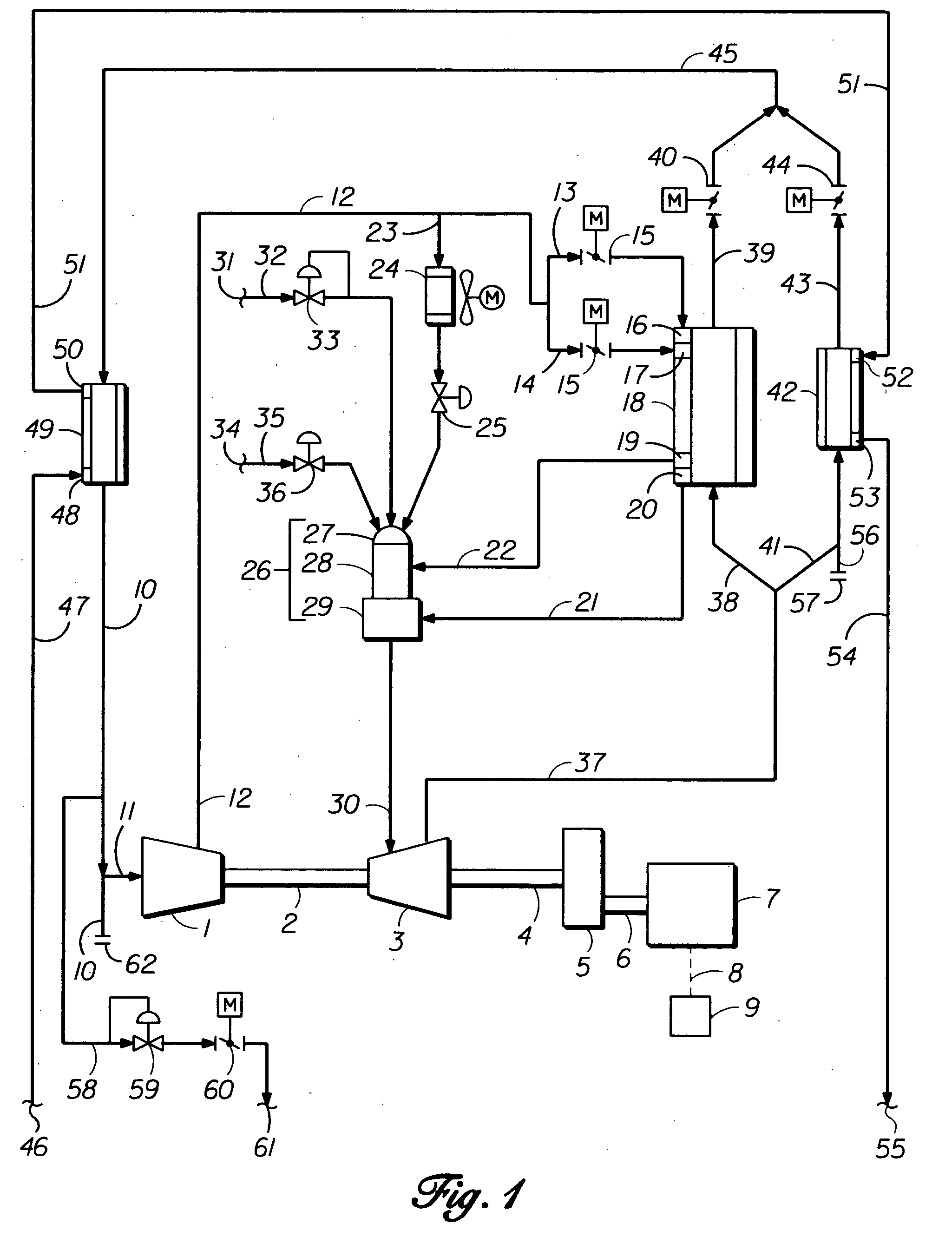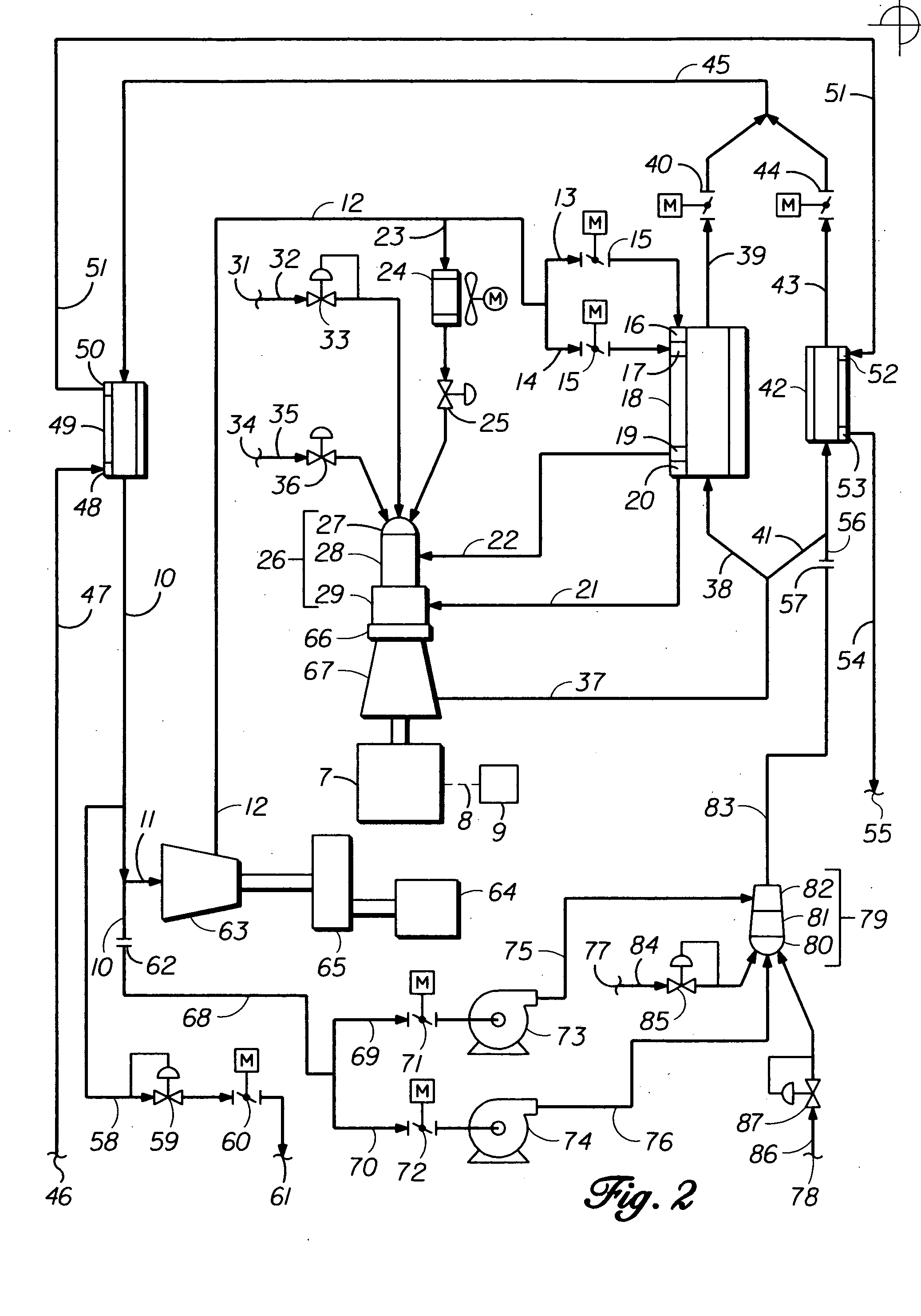Power cogeneration system and apparatus means for improved high thermal efficiencies and ultra-low emissions
a power cogeneration system and ultra-low emission technology, applied in the direction of machines/engines, jet propulsion plants, hot gas positive displacement engine plants, etc., can solve the problems of reducing the thermal efficiency of power cogeneration methods. , to achieve the effect of increasing the thermal efficiency of power cogeneration method system and apparatus
- Summary
- Abstract
- Description
- Claims
- Application Information
AI Technical Summary
Benefits of technology
Problems solved by technology
Method used
Image
Examples
Embodiment Construction
[0082] Referring now more particularly to FIG. 1, an example modified conventional gas turbine engine power unit's exhaust recycle gas compressor section 1 comprises two or more recycle exhaust gas compression stages, positioned in series, with a final stage of radially directed discharge flow of compressed or re-pressurized recycle exhaust gas. In the case of a two-shaft turbine engine, the power to drive the recycle gas compressor section 1 is transmitted by shaft 2, on which one or more high-pressure power extraction turbine stages are mounted within the combustion hot gas expansion power turbine assembly 3. The second shaft, designed for mechanical equipment or generator drive applications, has one or more low-pressure hot gas expansion power stages mounted on power output shaft 4, with coupling means for power transmission to rotate the driven equipment.
[0083] The invention's improved power cogeneration method adaptation to modified conventional gas turbine engine driven mecha...
PUM
 Login to View More
Login to View More Abstract
Description
Claims
Application Information
 Login to View More
Login to View More - R&D
- Intellectual Property
- Life Sciences
- Materials
- Tech Scout
- Unparalleled Data Quality
- Higher Quality Content
- 60% Fewer Hallucinations
Browse by: Latest US Patents, China's latest patents, Technical Efficacy Thesaurus, Application Domain, Technology Topic, Popular Technical Reports.
© 2025 PatSnap. All rights reserved.Legal|Privacy policy|Modern Slavery Act Transparency Statement|Sitemap|About US| Contact US: help@patsnap.com



